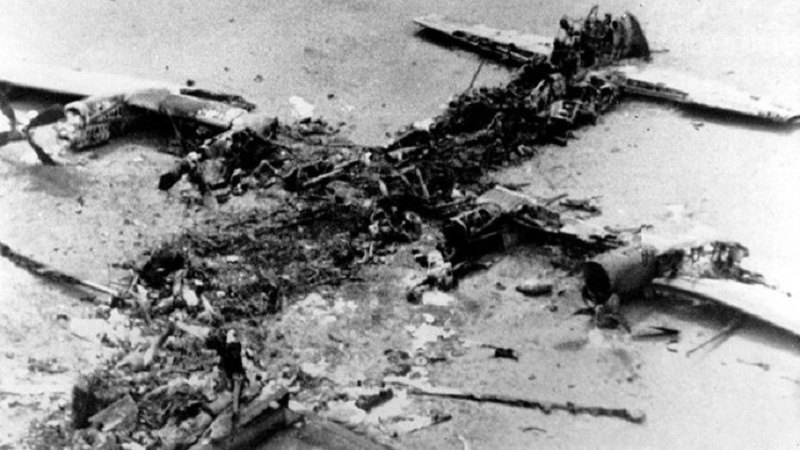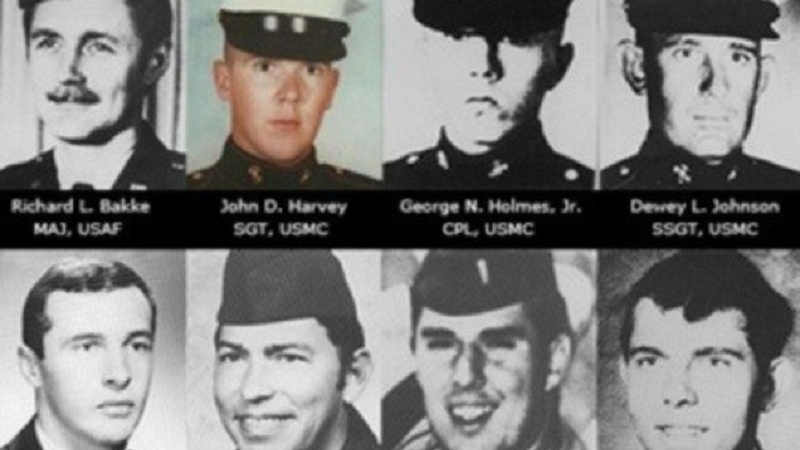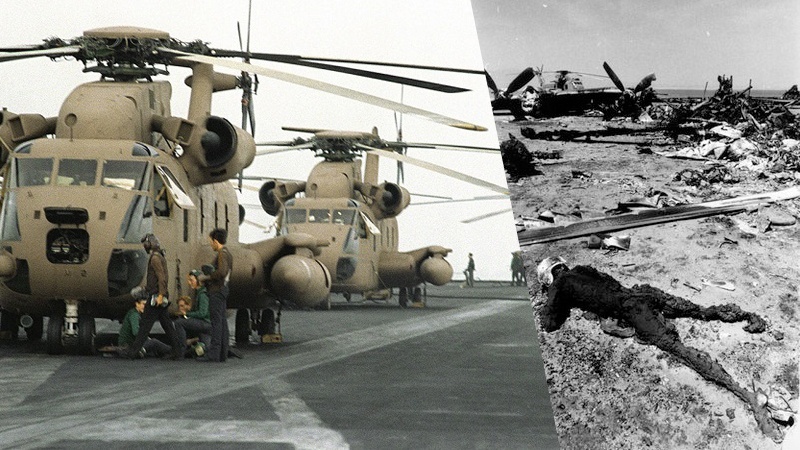The story of US's defeat in the Iranian desert + Stunning images of killed American soldiers
Pars Today - On April 25, 1980, about 15 months after the Islamic Revolution in Iran and the fall of the Shah's dictatorial regime, which was dependent on the United States, the American military operation called "Operation Eagle Claw" faced a major disaster in the Tabas Desert of Iran and ended in defeat.
This event occurred after Jimmy Carter, the President of the United States at the time, decided to launch a military attack on Iran. The pretext for this invasion was to free the American spies who had been taken captive by Iranian students on November 4, 1979. However, the main goal was to attack Iran's political and military centers and bring down the Islamic Republic.
The White House officials, who were caught off guard by the students' movement and whose plots were exposed, decided to use military force and, with the support of some internal forces and Western media propaganda, try to bring down the Iranian government.
The entry of American forces into Iran
According to the plan, on April 24, 1980, seven giant C-130 planes and eight helicopters entered Iranian airspace, carrying advanced military equipment and vehicles such as jeeps, motorcycles, and special operation gear.
The Americans entered Iran from the south, and with the coordination of the Western-oriented government of Banisadr, they traveled about 100 kilometers without encountering any resistance and landed at a deserted airport near Robat Khan,Tabas.
As part of a coordinated operation with infiltrated forces, the anti-aircraft equipment had been removed from the planned route, and the special forces reached the Tabas Desert at midnight.
Failure of the operation and destruction of a significant part of American military equipment and personnel
When the American soldiers were in the Tabas Desert, one of their helicopters refueled from a C-130 plane and took off, colliding with the plane and causing both to catch fire.

Then, due to a sandstorm, two other helicopters suffered technical failures and were unable to continue the operation. As a result, the plan was halted, and the Americans, fearing that they would all be destroyed or captured by Iranian forces, took advantage of the night and fled.

The command structure of the US military forces was so shattered that they left behind eight dead American soldiers, secret and confidential documents, and abandoned helicopters.


Consequences
The Tabas defeat was a severe blow to American imperialism and led to the embarrassment of the White House officials. The United States wanted to punish the Iranian people for overthrowing the Pahlavi monarchy and capturing American spies, but the result was the opposite.


Moreover, the Iranian nation became more vigilant, and the enmity of Western dominance-seeking elements became more apparent. The infiltrators and internal collaborators with Western colonialism were also exposed.
Carter was hoping to be re-elected after the release of the captives, but due to this failure and Imam Khomeini's decision to hold the spies until the elections, the American people did not vote for him, and he lost the election. Later, he said in an interview:
My presidency was the worst period of presidency in the United States, because at that time, the American government was held hostage by Ayatollah Khomeini in Iran.
MG/UR



